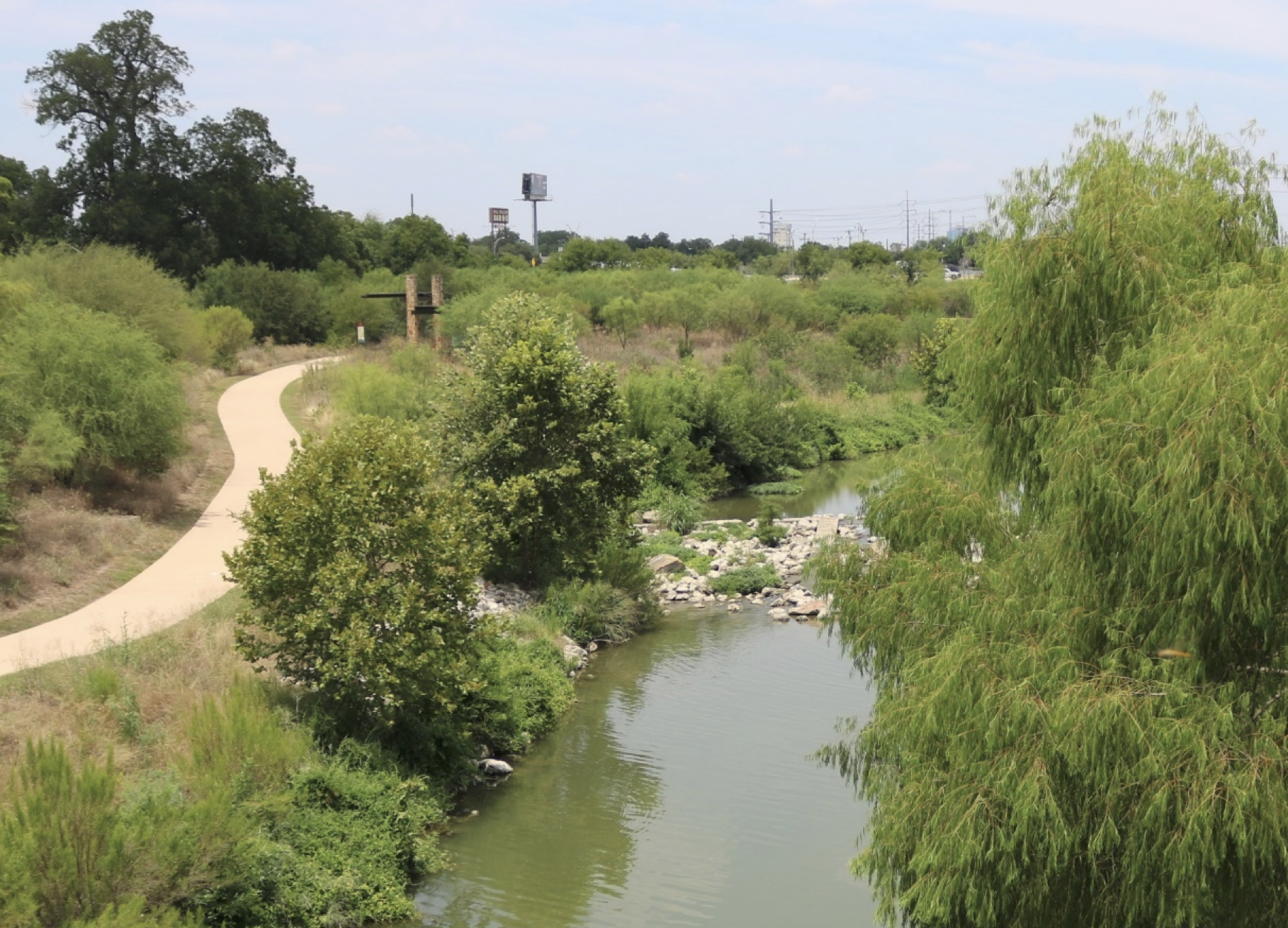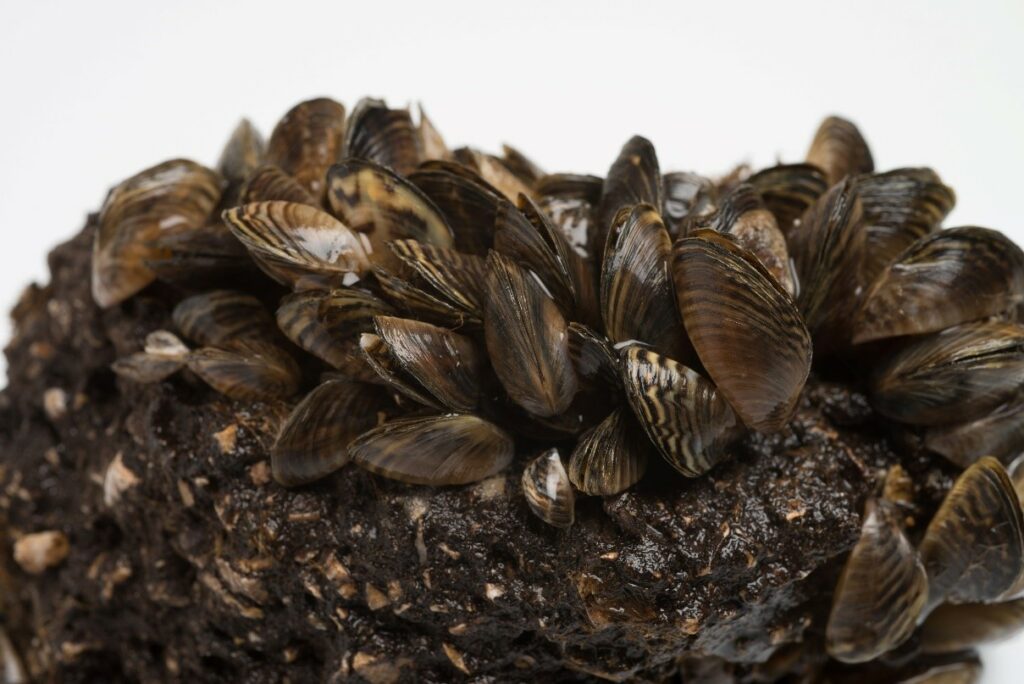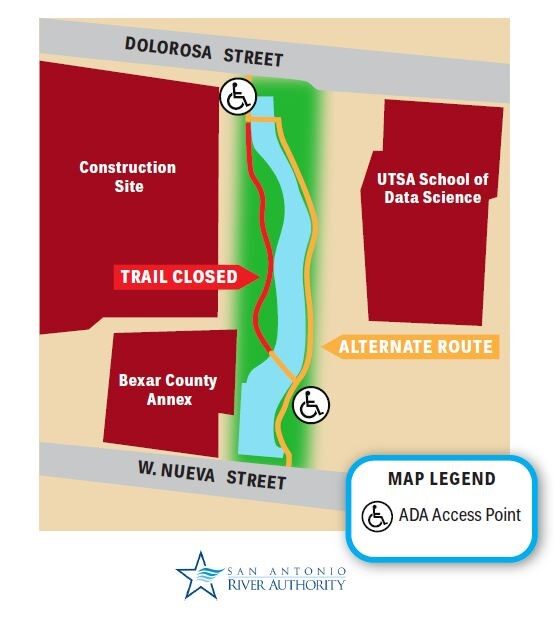The San Antonio River Authority (River Authority) is proactive when it comes to protecting our natural resources and staff have been hard at work to address invasive species as part of our commitment to safe, clean, and enjoyable creeks and rivers. You might have seen in recent news that Texas Parks and Wildlife Department (TPWD) announced that invasive zebra mussels (Dreissena polymorpha) have been discovered in Medina Lake, marking the first significant detection of the nonnative species in the San Antonio River Basin.
The River Authority is taking a proactive approach and is actively engaging the public through educational outreach efforts with the goal of stopping zebra mussels from reaching other waterways across the state and limiting the spread within the San Antonio River Basin. Read along as we share more info about this invasive species, how their presence is harmful to our waterways, and what steps you can take to help us in our efforts!
What are Zebra Mussels?
Zebra mussels are shelled animals in the same taxonomic class as clams. They can grow to a seemingly underwhelming size of 2 inches, yet they occur in large colonies in freshwater systems, such as lakes and rivers. Their name stems from the shell’s striped pattern. Zebra mussels are native to Russia and Ukraine and were first detected in the United States in the Great Lakes and Hudson River in the 1980s.
Why are they so problematic?
Zebra mussels can interfere with recreation and wreak financial havoc on infrastructure. Recreationalists may face encrusted watercraft, fishing equipment, and water systems in motorboats. Water supply intake pipes and pipelines can become fully blocked as they are colonized by zebra mussels.
Zebra mussels live in dense colonies that exceed 100,000 individuals per square meter and multiply rapidly. This is alarming because adult females release up to 1 million eggs into the water per year! The newly hatched mussels are not visible to the naked eye and are easily carried to other waterways by boats and equipment. What makes this even more problematic is mussels can live out of water for up to seven days.
Adding to the dilemma, the zebra mussel’s few natural predators in Texas waterways have little effect on their spread. Infested streams and lakes have reported colonies of zebra mussels taking over habitats and nutrients from native fish and freshwater mussel colonies.
How do River Authority scientists detect Zebra Mussels?

Mission Reach of the San Antonio River Walk
Zebra mussels invaded the waters of Texas years ago and have been marching across the state toward the San Antonio River Basin. In 2019, River Authority aquatic biologists started a proactive, routine monitoring program of the most likely areas of zebra mussel infestation by working with the TPWD, CPS Energy, and the Bandera County River Authority and Groundwater District to establish settlement samplers at Braunig and Calaveras lake parks as well as Medina Lake. A Settlement sampler is a simple brick or block meant to capture adult mussels seeking to settle and attach themselves to a solid surface. River Authority staff also started collecting water samples from the three lakes during zebra mussel spawning seasons (May/June and Oct/Nov) and providing the preserved samples to the TPWD for microscopic analysis looking for juvenile zebra mussels, known as veligers.
Upon receiving notice from TWPD on March 5, 2021 that zebra mussels have been confirmed in Medina Lake, we have adapted the monitoring program given these invasive mussels are now known to be in the San Antonio River Basin. During spawning seasons, water sampling will continue at Braunig and Calaveras lakes and now will also take place at Boerne City Lake. Settlement samplers will remain in the three lakes and will now also be deployed at two locations in the Medina River downstream from Medina Lake and at three locations throughout the San Antonio River Walk. Settlement samplers will be deployed downstream of the Braunig and/or Calaveras Lake discharge locations if either lake is designated as positive based on future sampling.
Be River Proud and help stop the spread of Zebra Mussels!
We need your help to stop zebra mussels from spreading any further in the San Antonio River Basin! How did zebra mussels from Russia and Ukraine get into the Great Lakes and Hudson River and how have they marched across the country to end up in the Medina River? In some cases, humans purposefully move species from one area of the world to another. Transporting zebra mussels, among other prohibited invasive species, is illegal in the State of Texas.
In the case of zebra mussels, it is most likely that they are being moved accidentally by people who boat or fish in an infected water body who then unknowingly carry the juvenile zebra mussels to new freshwater bodies because the microscopic veligers can be so easily transported. Therefore, the TPWD and River Authority require both motorized and non-motorized boat recreationalists as well as people who fish recreationally to do the following:
- Clean your watercraft, anchor, trailer, and gear. Remove any plants, animals, or foreign objects.
- Drain all water from your watercraft and completely empty your bait buckets to rid them of possible microscopic zebra mussels and larvae. (This applies to all types and sizes of boats. Violations are Class C misdemeanors for the first offense, punishable with a fine of up to $500.)
- Dry everything for a week or more before entering another water body. If unable to dry it completely, wash it with high-pressure, hot (140° F), soapy water.
The public is encouraged to learn more about zebra mussels and help stop their spread by following the directions above and reporting sightings to both the River Authority and TPWD. To do so, contact the River Authority’s Environmental Investigations team online or by calling 866-345-7272, and use the TPWD online reporting system found on the Texas Invasives webpage.





